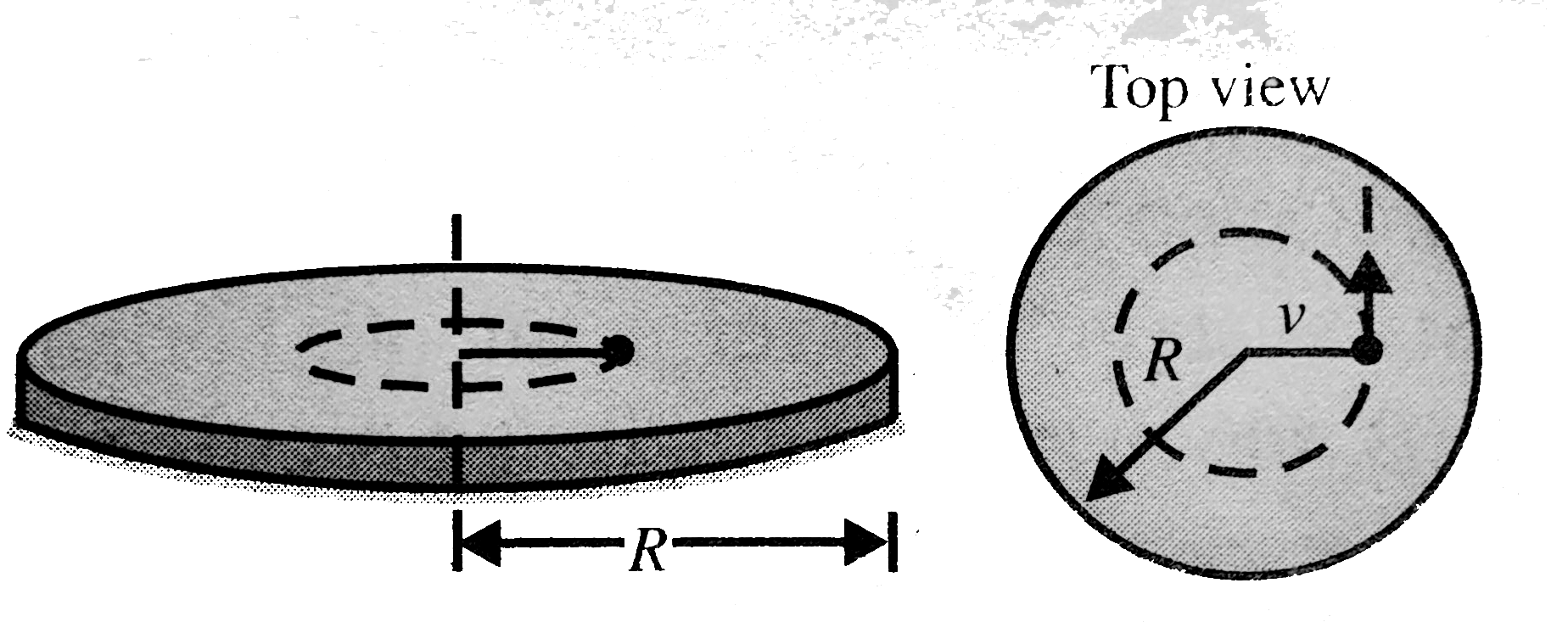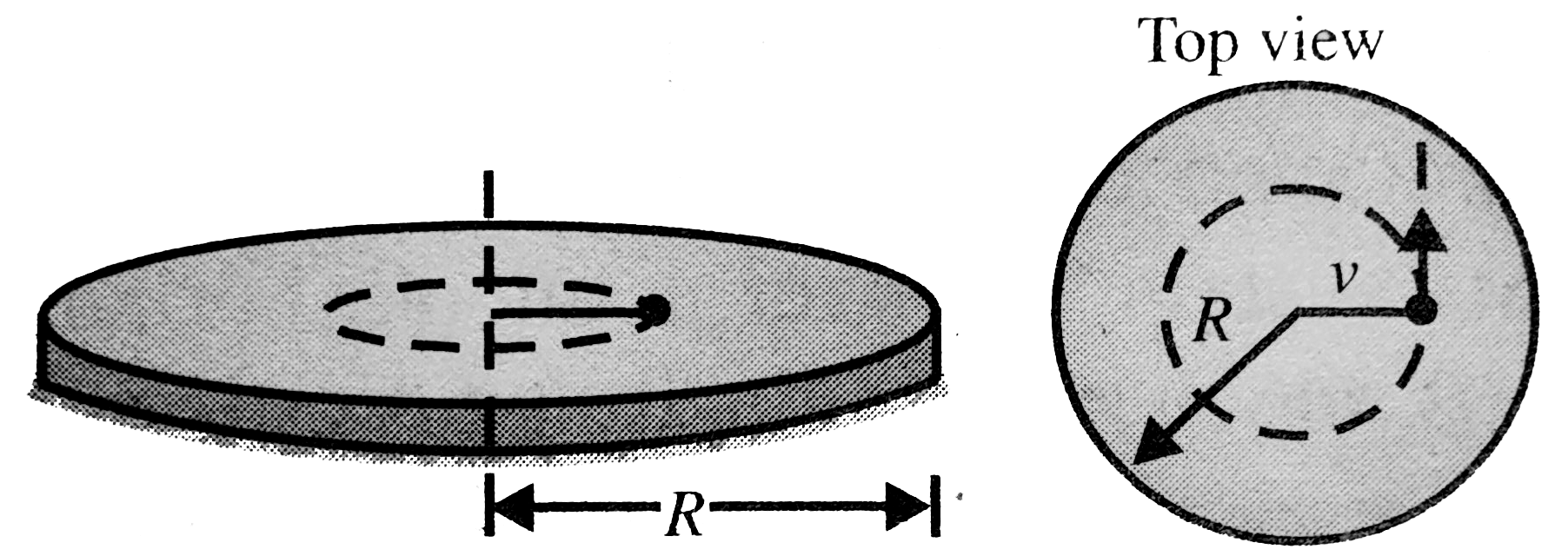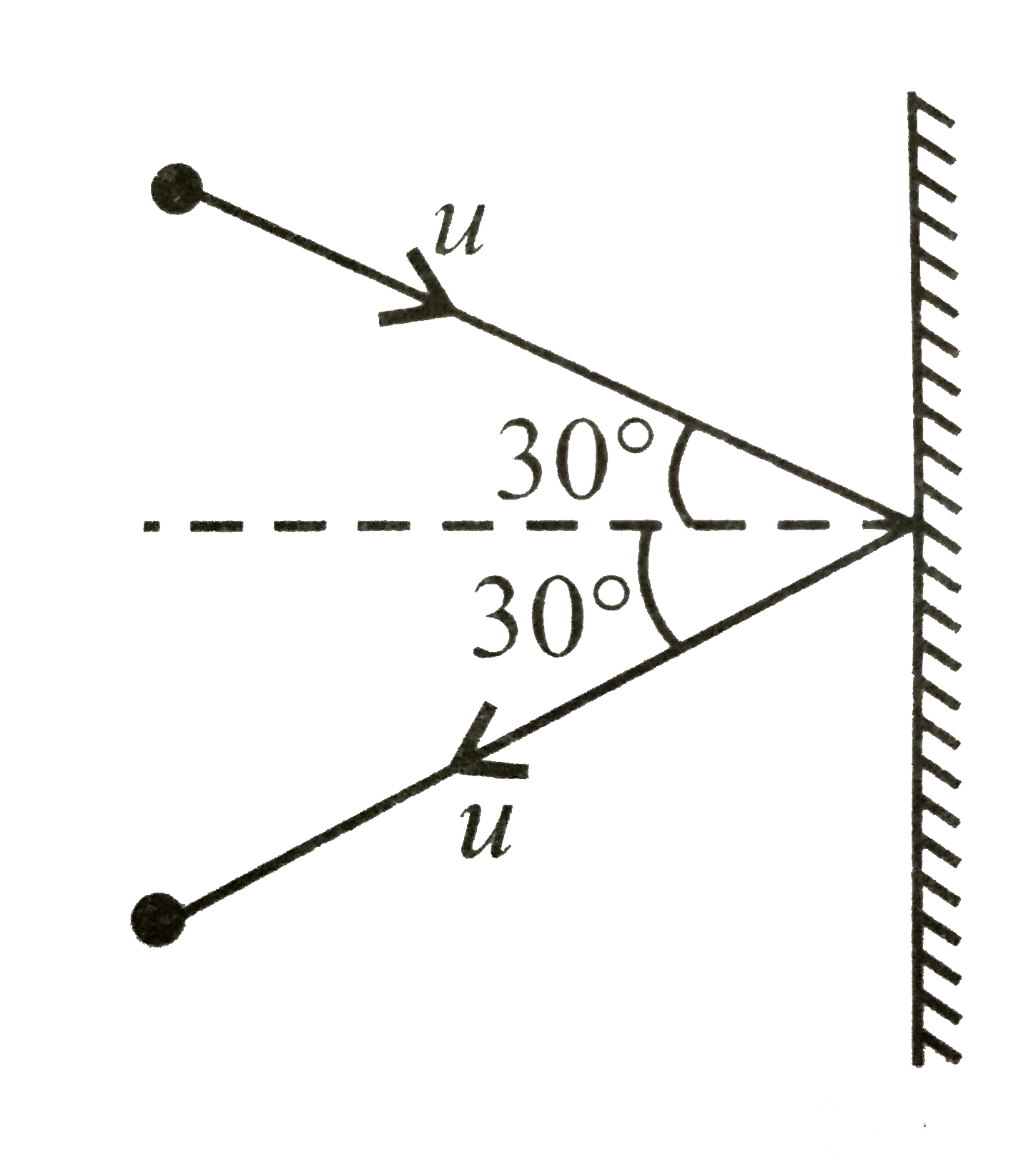A small ball of mass 1kg is kept in circular path of radius 1m Inside a concentric smooth horizontal fixed casing of radius R. Angular speed of the ball in the circular motion is 1rads−1. At a certain moment the string, which kept the ball in the circular path breaks and the ball goes off tangentially to the wall of rigid casing and bounces off elastically and again hits the casing and bounces off. This way, the ball traces a regular hexagon. Consider all the collisions to be elastic.

Total impulse imparted to the casing by the ball in first six collisions will be
6√3Ns
3√3Ns
zero
12Ns
The correct Answer is:C
The vector sum of momenta for first six collision is zero as show.

Topper's Solved these Questions
- CENTRE OF MASSBOOK - CENGAGE PHYSICSCHAPTER - CENTRE OF MASSEXERCISE - Integer
16 Videos
- CENTRE OF MASSBOOK - CENGAGE PHYSICSCHAPTER - CENTRE OF MASSEXERCISE - Fill In The Blanks
2 Videos
- CENTRE OF MASSBOOK - CENGAGE PHYSICSCHAPTER - CENTRE OF MASSEXERCISE - Assertion - Reasoning
2 Videos
- CALORIMETRYBOOK - CENGAGE PHYSICSCHAPTER - CALORIMETRYEXERCISE - Solved Example
13 Videos
- DIMENSIONS & MEASUREMENTBOOK - CENGAGE PHYSICSCHAPTER - DIMENSIONS & MEASUREMENTEXERCISE - Integer
2 Videos
Similar Questions
Knowledge Check
A small ball of mass 1kg is kept in circular path of radius 1m Inside a concentric smooth horizontal fixed casing of radius R. Angular speed of the ball in the circular motion is 1rads−1. At a certain moment the string, which kept the ball in the circular path breaks and the ball goes off tangentially to the wall of rigid casing and bounces off elastically and again hits the casing and bounces off. This way, the ball traces a regular hexagon. Consider all the collisions to be elastic.

Total time between the first collision and the seventh collision willA√43sB4√3sC3√3sDnoneA small ball of mass 1kg is kept in circular path of radius 1m Inside a concentric smooth horizontal fixed casing of radius R. Angular speed of the ball in the circular motion is 1rads−1. At a certain moment the string, which kept the ball in the circular path breaks and the ball goes off tangentially to the wall of rigid casing and bounces off elastically and again hits the casing and bounces off. This way, the ball traces a regular hexagon. Consider all the collisions to be elastic.

Following quantities of the ball will remain a constant before and after any collisionAlinear momentumBkinetic energy, angular momentum about the centre of the circleCvelocity, angular momentum about the centre of the circle, kinetic energyDnone of theseA ball of mass 'm' strikes a rigid wall with speed 'u' and rebounds with the same speed. The impulse imparted to the ball by the wall is
A2 mu,Bmu,CzeroD−2mn
A ball of mass m strikes a rigid walJ with speed u and rebounds with the same speed. The impulse imparted to the ball by the wall is
View SolutionA ball of mass m strikes a rigid walJ with speed u and rebounds with the same speed. The impulse imparted to the ball by the wall is

View SolutionIf a particle of mass 1 gm is moving along a circular path of radius 1 m with a velocity of 1 m/s, then the its angular momentum is
View SolutionA body of mass 1kg is moving with a uniform speed of 1m/s in a circular path of radius 1m. The external force acting on the body is
View SolutionA body of mass 2 kg is rotating on a circular path of radius 0.5 m, with an angular velocity of 20 rad/s. If the radius of the path is doubled, then the new angular velocity will be
View Solution
